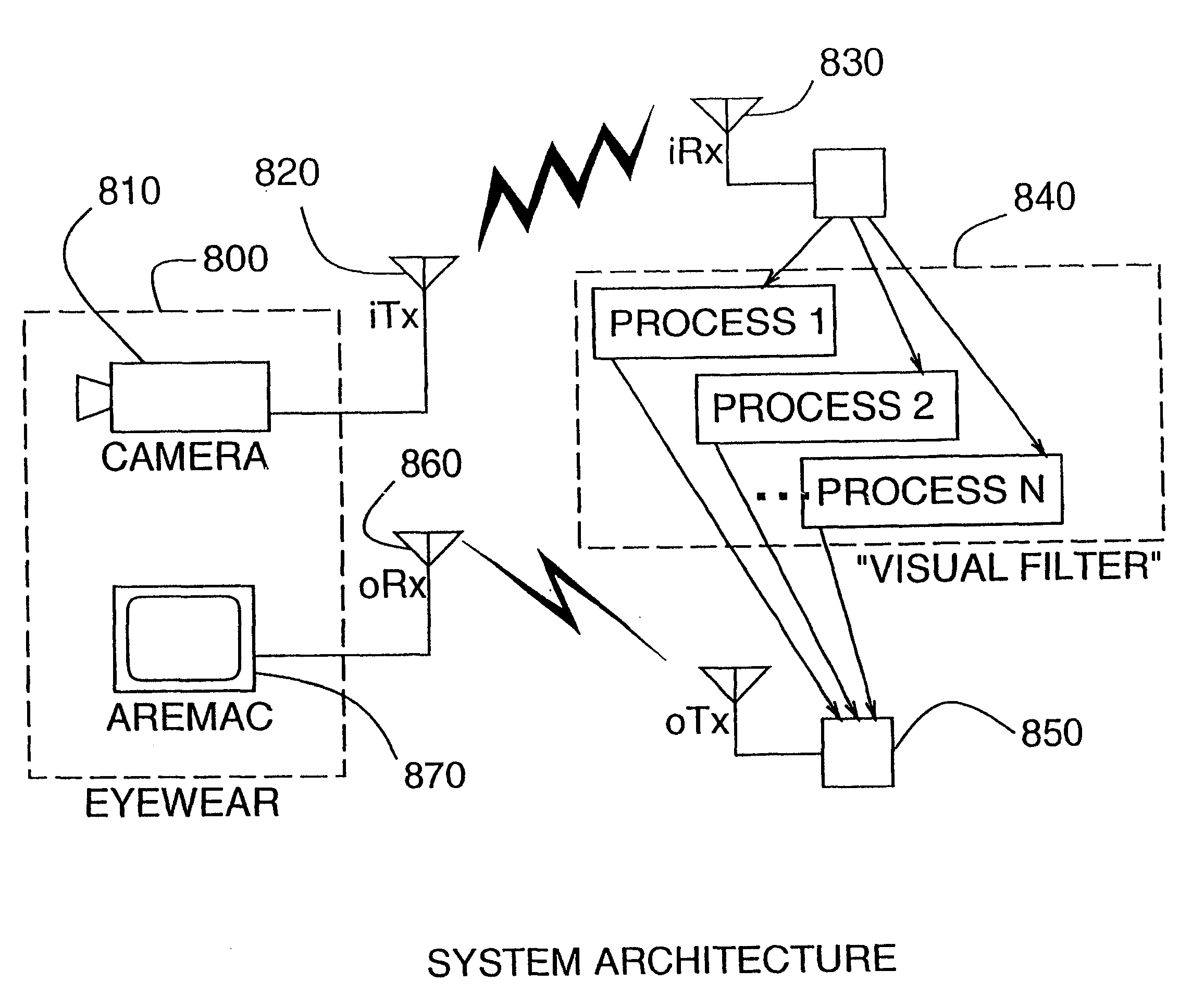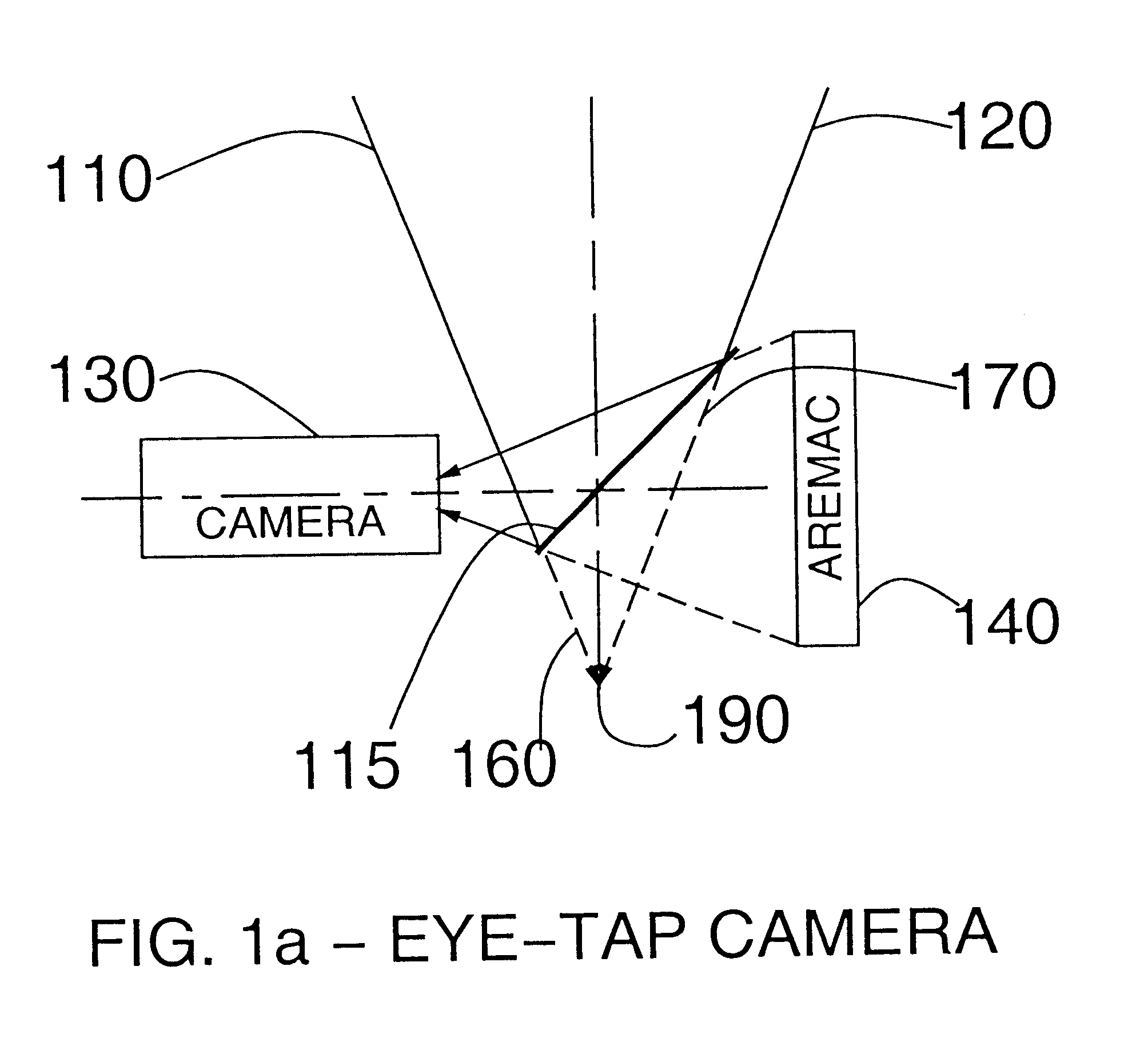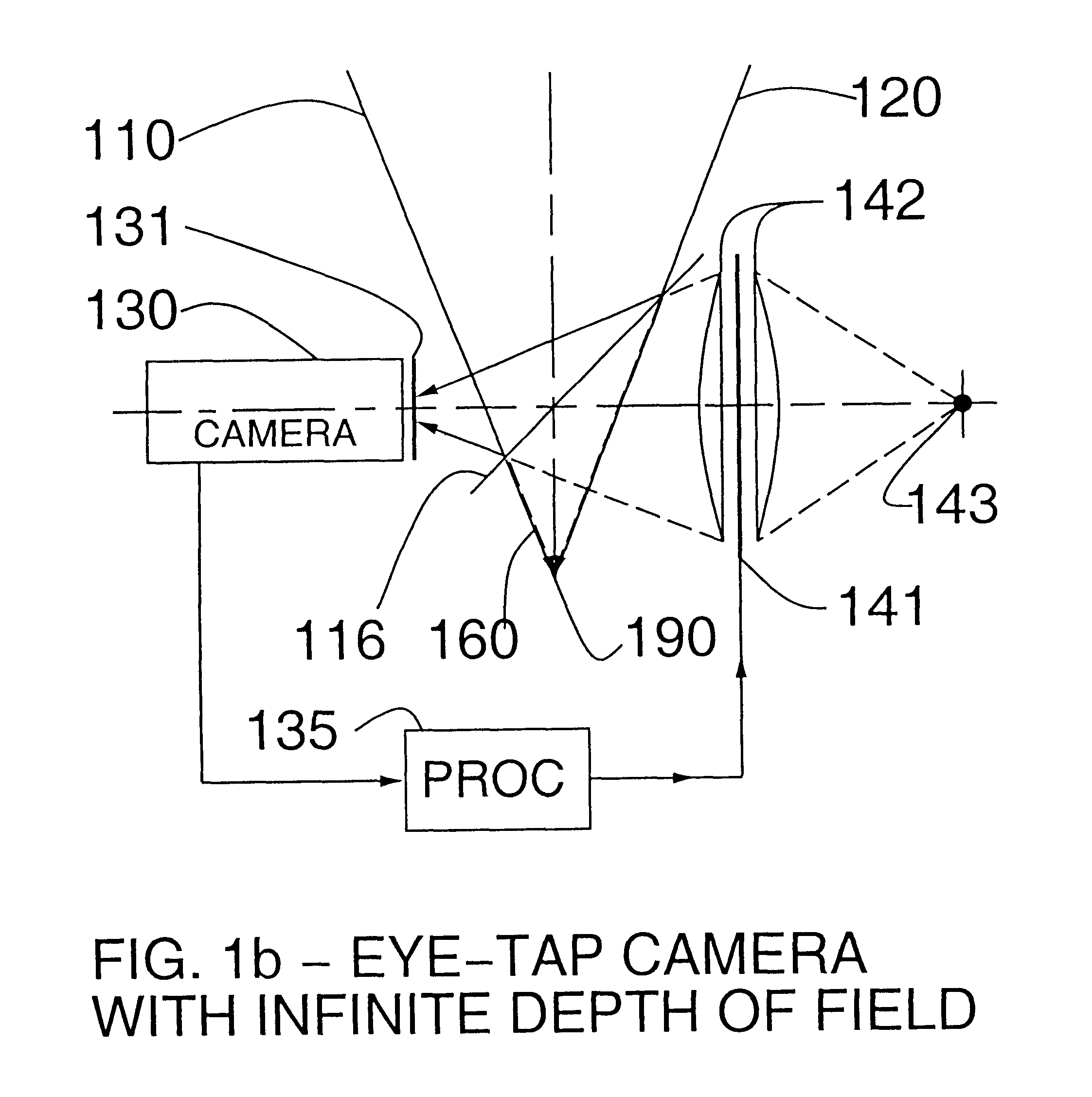Current state-of-the-art newsgathering apparatus creates a
visual disturbance to others and attracts considerable attention on account of the camera
crew, sound crew, the bulky equipment, and the manner in which it is deployed and used.
Even when a
single camera operator is assigned to a newsgathering task, the simple gesture of bringing or holding the camera up to the eye can disrupt the event being reported.
Even if the size of the camera could be reduced to the point of being negligible (e.g. no bigger than the eyecup of a typical camera
viewfinder, for example), the very gesture of bringing a device up to the eye is unnatural and attracts considerable attention, especially in establishments such as gambling casinos or department stores where photography is often prohibited, yet where newsworthy events frequently happen.
Although there exist a variety of covert cameras which are frequently used in investigative journalism, such as a camera concealed beneath the jewel of a necktie clip, cameras concealed in baseball caps, and cameras concealed in eyeglasses, these cameras tend to produce inferior images, not just because of the technical limitations imposed by their small size, but, more importantly because they lack a means of viewing the image, as well as a means of having others view the image.
Because of the lack of
viewfinder means, and the lack of analysis / communications means between the camera operator and remote
test equipment / technical staff, investigative video and photojournalism made with concealed cameras of the prior art suffers from poor composition and poor image /
sound quality.
It is also shown that effects of moderate transformations can often have a more detrimental effect on performing other tasks through the camera as well as detrimental flashbacks upon removal of the camera, than that which would arise from either extreme or negligible transformations.
These findings suggest that merely mounting a conventional camera such as a small 35 mm rangefinder camera or a small video camcorder to a helmet, so that one can look through the viewfinder and use it it hands-free while performing other tasks, will result in poor performance at doing those tasks while looking through the camera viewfinder, in addition to the obvious shortcoming of not having technical staff or other remote collaborators available.
Part of the reason for poor performance associated with simply attaching a conventional camera to a helmet is the induced noncollinearity (failure to provide a truly orthoscopic view).
Even viewfinders which correct for
parallax, as described in U.S. Pat. No. 5,692,227 in which a rangefinder is coupled to a
parallax error compensating mechanism, only correct for
parallax between the viewfinder and the
camera lens that is taking the picture, but do not correct for noncollinearity between rays of light passing through the viewfinder and those that would be observed with the
naked eye while not looking through the camera.
Such displays do not directly incorporate a camera.
Although they could be used to display the output image from an electronic camera (hand-held or perhaps mounted to the same helmet), the above-mentioned problems would still exist.
For such compositional and interactional capabilities, a simple air-based viewfinder is inadequate.
In addition to requiring a very large person to optimally operate such cameras, various stabilization devices are often used, which make the apparatus even more cumbersome.
Of course this illusory transparency is lost once the system is shut off, e.g. when the system is shut off, the diverter functions as a partial blindfold or eye patch that blocks a portion of the user's
field of view.
However, in the event that such infinite
depth of focus is not desirable (e.g. insofar as it might be confusing to novice users), processor 135 is often used to modify the image from camera 130 and extract just the salient details that are needed, so that a full and complete image is not presented to the user.
However, the apparatus of the invention depicted in FIG. 3a fits over both eyes, and cannot therefore be easily rotated as a whole unit, without having it uncover one or both eyes.
Since a handheld camera cannot be readily used for meta documentary (which requires a right eyeview since most camcorders are right eyed), the device may be either left-eyed or right-eyed.
Cabling 710 is typically made of heavy security cable, which is similar to aircraft cable but designed so that it cannot be easily
cut with bolt cutters, hacksaws, or the like.
In this way, clothing incorporating cabling 710 cannot be easily removed by individuals who might
attack the wearer 600.
Furthermore, very loud ear-piercing alarms may be activated, to scare off attackers or to interfere with their ability to continue with their criminal activity.
Moreover, computer 970 is unmonopolizing of the journalist's attention, and is configured so that the journalist does not need to pay the level of attention to the computer that is typical of normal desktop or
laptop computers.
In this way, it is less likely that others will ask the journalist to leave the apparatus behind, since it would be unreasonable of someone to ask the journalist to leave his or her clothes behind.
In this way, rather than having to call for remote advice by telephone, little or no sound is made in this process, and it is not as easily for others to eavesdrop on this virtual conversation, as might be facilitated by the
UNIX "talk" command or the like.
In addition to shops and other organizations using their own video surveillance networks for the purposes of stalking and attacking people entering their organization, there is the problem that these perpetrators may attempt to committ undocumented crimes by avoiding their own surveillance network, or erasing data therein.
When citizens do not own the
physical space, they may not put real markings and real signs up.
 Login to View More
Login to View More  Login to View More
Login to View More 


